Abstract
The distribution of 14C-styrene was studied in the pregnant mouse using a whole body low temperature autoradiographic technique. In unsectioned tissues studied by liquid scintillation the concentrations of styrene and its metabolites in maternal and fetal blood and organs and in the placenta and amniotic fluid were determined. The organs which had higher concentrations of volatile styrene were maternal lung, kidney, liver, adipose tissue, and brain in mice killed shortly after injection. Non-volatile metabolites were localised in the lung, liver, kidney, gall bladder, and intestine. There were considerable amounts of radioactivity in the fetuses, though the concentrations were not as high in the maternal tissues. Fetal tissue levels were almost the same as maternal brain in mice killed from one to six hours after injection. The concentrations of styrene and its metabolites in placenta and amniotic fluid were about twice those in the fetal tissues. The placenta seems to play the part of a barrier for the fetus.
Full text
PDF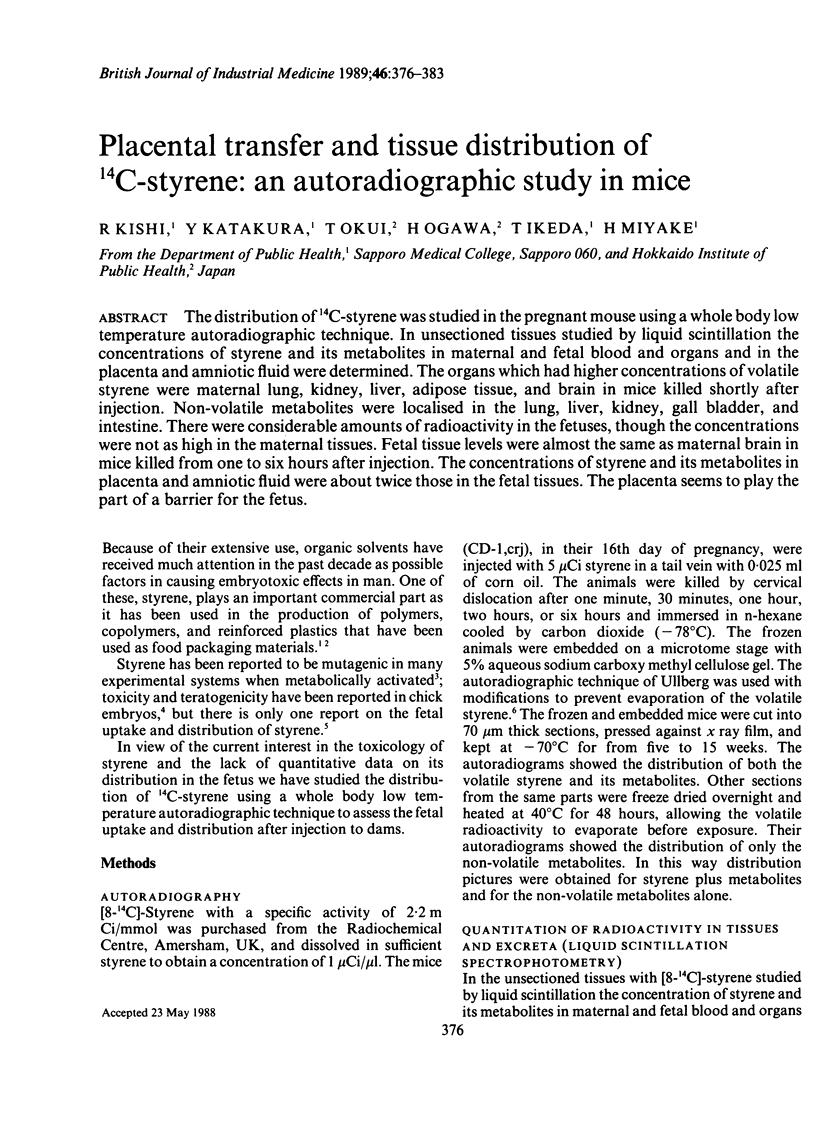
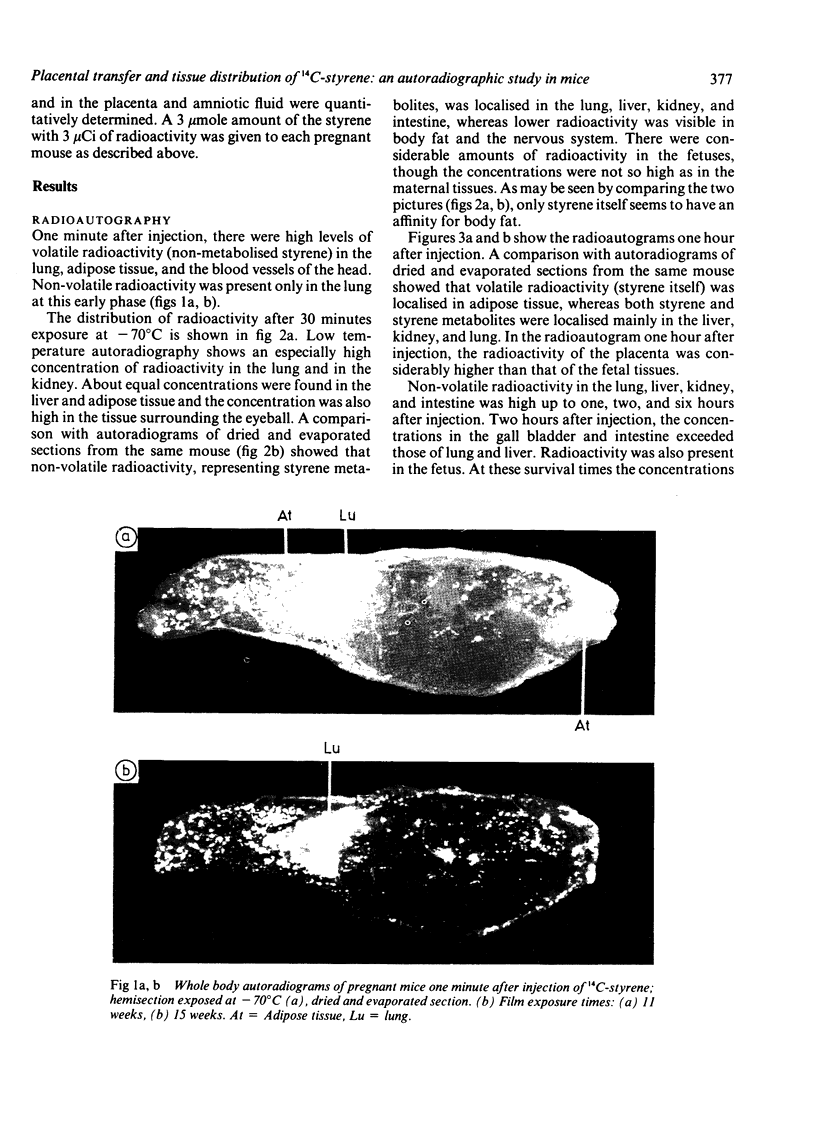
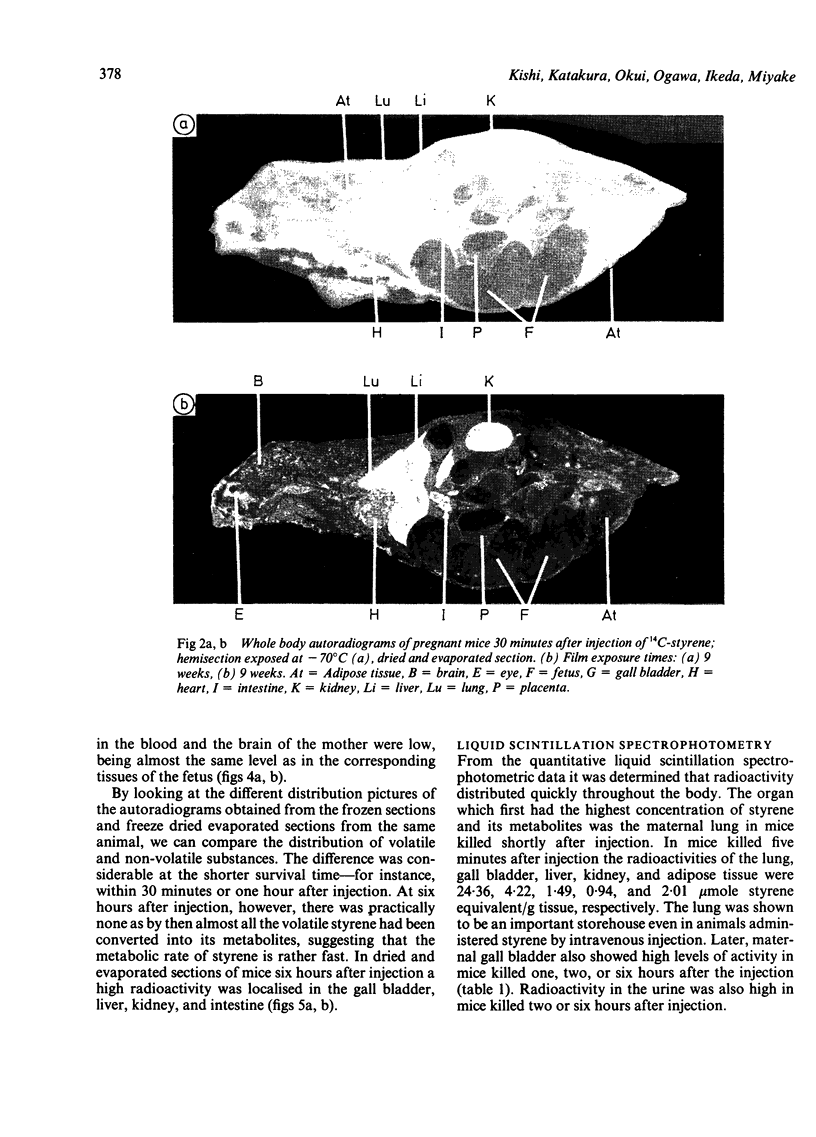
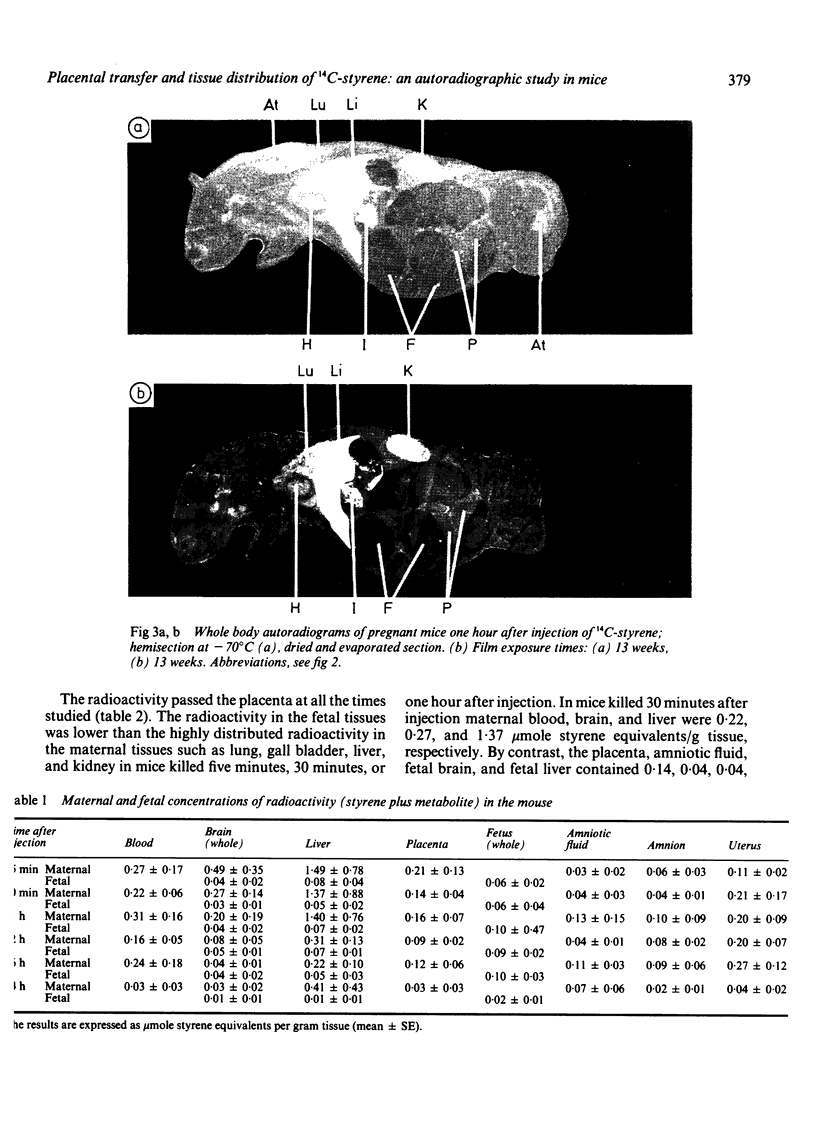
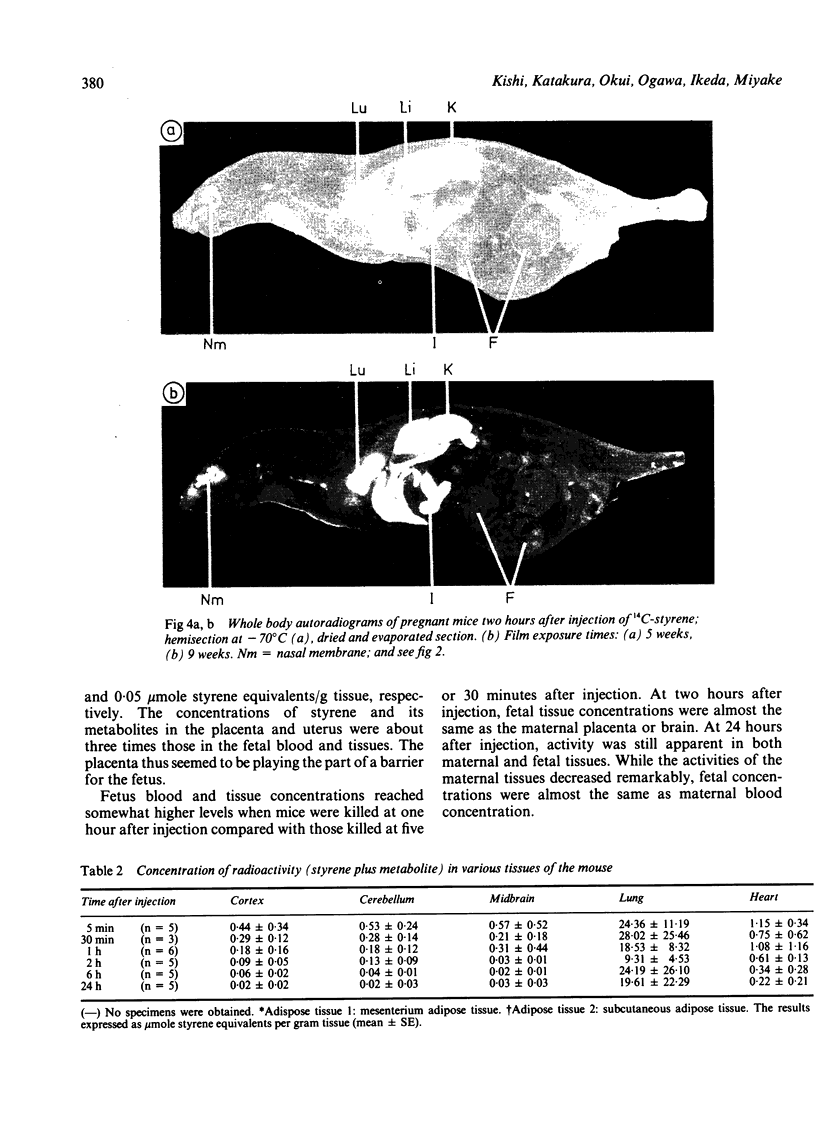
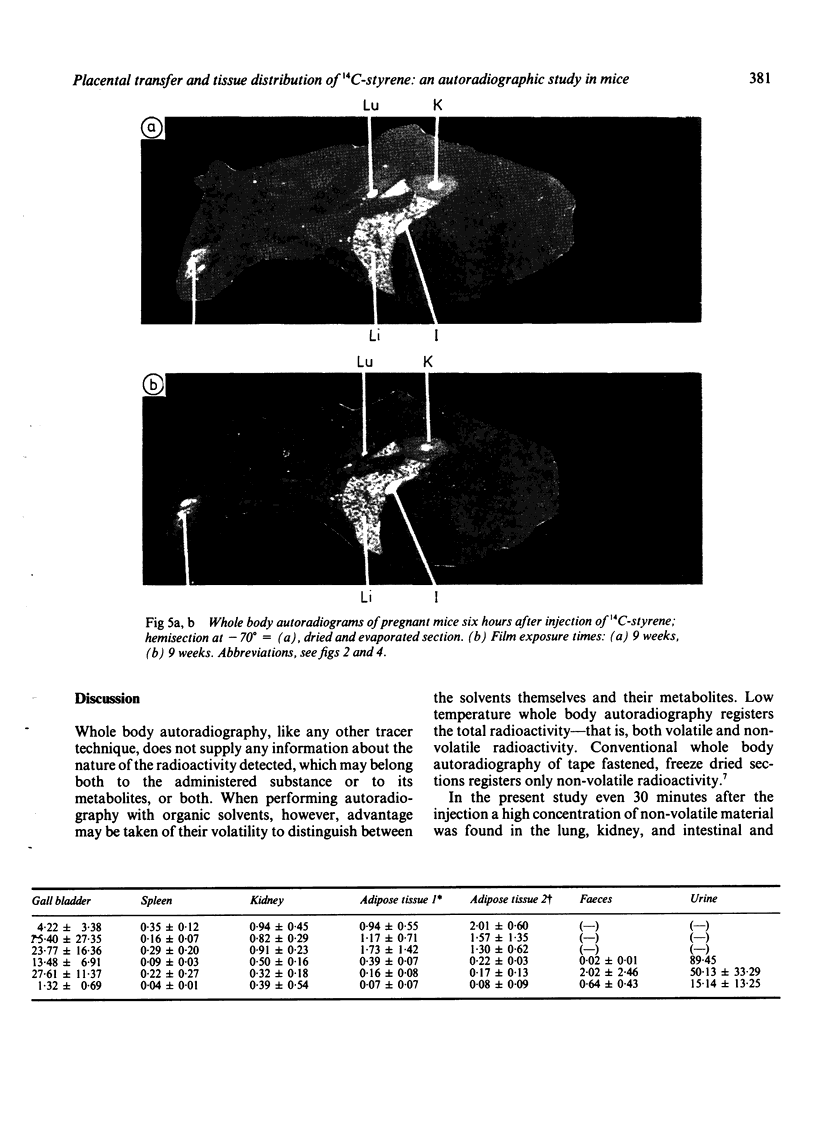
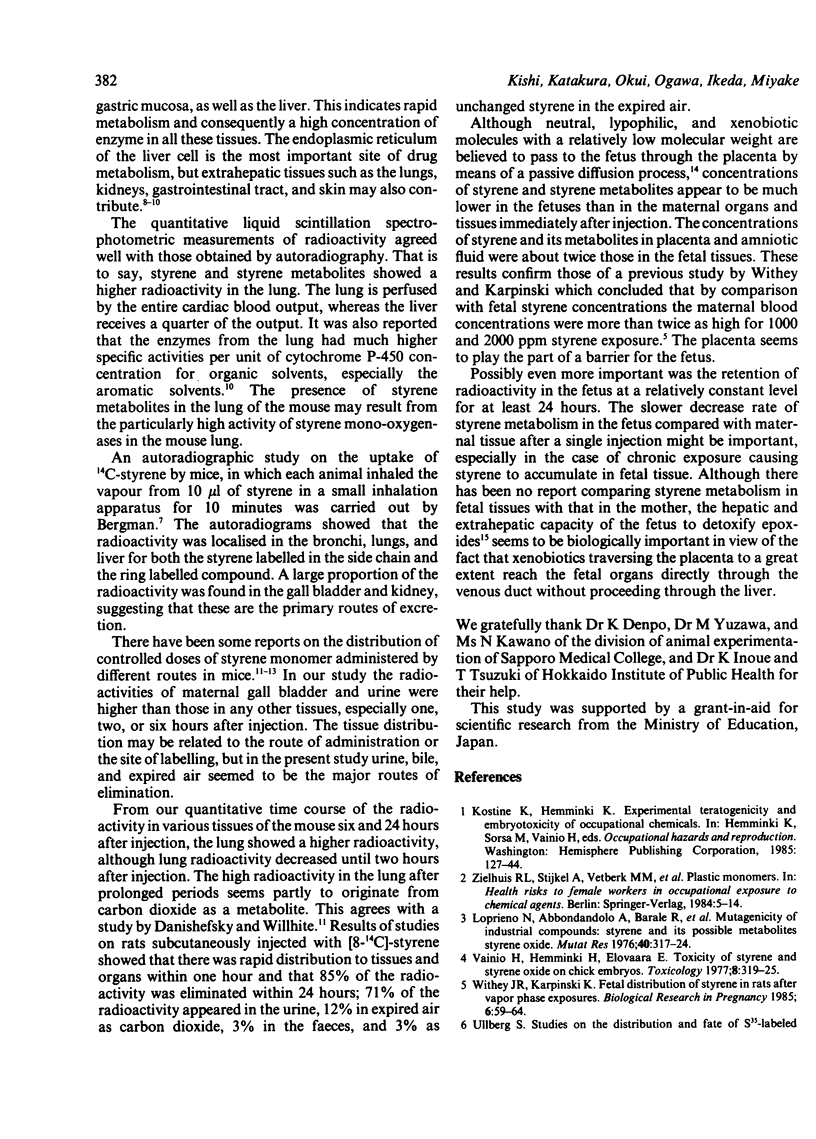
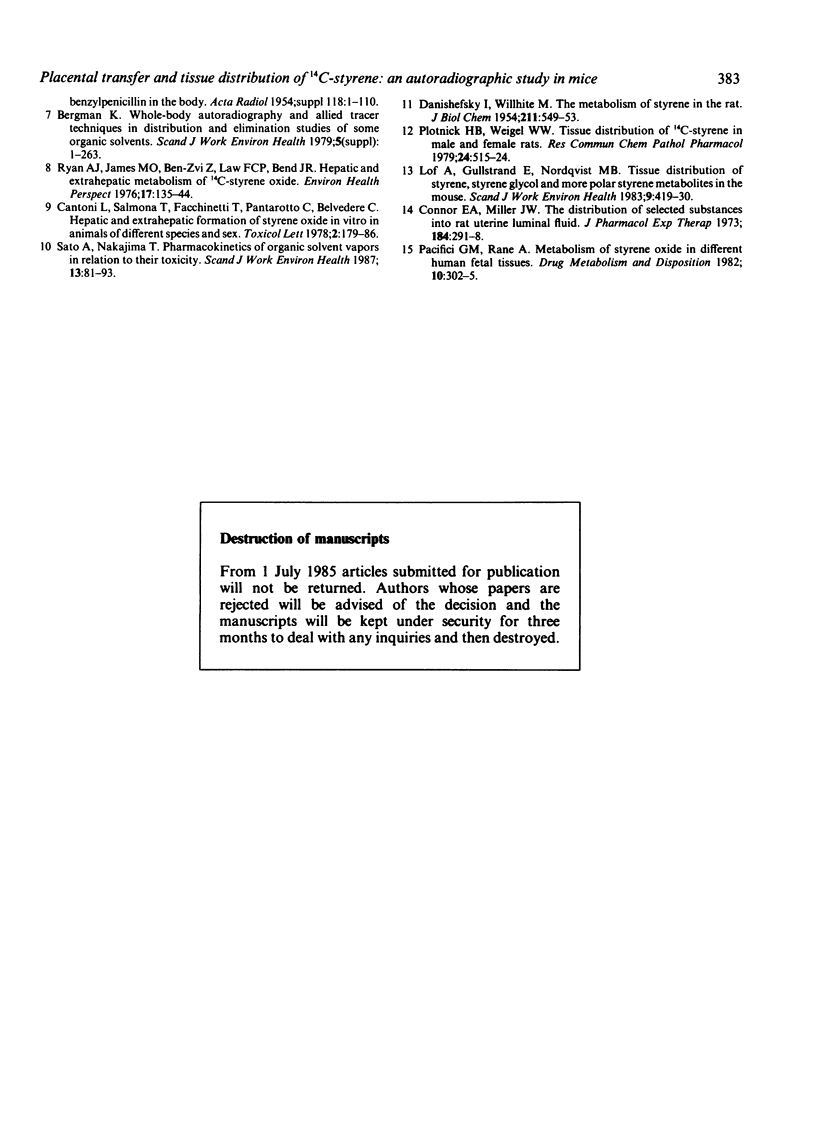
Images in this article
Selected References
These references are in PubMed. This may not be the complete list of references from this article.
- Bergman K. Whole-body autoradiography and allied tracer techniques in distribution and elimination studies of some organic solvents: benzene, toluene, xylene, styrene, methylene chloride, chloroform, carbon tetrachloride and trichloroethylene. Scand J Work Environ Health. 1979;5 (Suppl 1):1–263. [PubMed] [Google Scholar]
- Conner E. A., Miller J. W. The distribution of selected substances into rat uterine luminal fluid. J Pharmacol Exp Ther. 1973 Jan;184(1):291–298. [PubMed] [Google Scholar]
- DANISHEFSKY I., WILLHITE M. The metabolism of styrene in the rat. J Biol Chem. 1954 Dec;211(2):549–553. [PubMed] [Google Scholar]
- Loprieno N., Abbondandolo A., Barale R., Baroncelli S., Bonatti S., Bronzetti G., Cammellini A., Corsi C., Corti G., Frezza D. Mutagenicity of industrial compounds: styrene and its possible metabolite styrene oxide. Mutat Res. 1976 Nov;40(4):317–324. doi: 10.1016/0165-1218(76)90030-6. [DOI] [PubMed] [Google Scholar]
- Löf A., Gullstrand E., Byfält Nordqvist M. Tissue distribution of styrene, styrene glycol and more polar styrene metabolites in the mouse. Scand J Work Environ Health. 1983 Oct;9(5):419–430. doi: 10.5271/sjweh.2392. [DOI] [PubMed] [Google Scholar]
- Pacifici G. M., Rane A. Metabolism of styrene oxide in different human fetal tissues. Drug Metab Dispos. 1982 Jul-Aug;10(4):302–305. [PubMed] [Google Scholar]
- Plotnick H. B., Weigel W. W. Tissue distribution and excretion of 14c-styrene in male and female rats. Res Commun Chem Pathol Pharmacol. 1979 Jun;24(3):515–524. [PubMed] [Google Scholar]
- Ryan A. J., James M. O., Ben-Zvi Z., Law F. C., Bend J. R. Hepatic and extrahepatic metabolism of 14C-styrene oxide. Environ Health Perspect. 1976 Oct;17:135–144. doi: 10.1289/ehp.7617135. [DOI] [PMC free article] [PubMed] [Google Scholar]
- Sato A., Nakajima T. Pharmacokinetics of organic solvent vapors in relation to their toxicity. Scand J Work Environ Health. 1987 Apr;13(2):81–93. doi: 10.5271/sjweh.2075. [DOI] [PubMed] [Google Scholar]
- Vainio H., Hemminki K., Elovaara E. Toxicity of styrene and styrene oxide on chick embryos. Toxicology. 1977 Dec;8(3):319–325. doi: 10.1016/0300-483x(77)90079-8. [DOI] [PubMed] [Google Scholar]
- Withey J. R., Karpinski K. Fetal distribution of styrene in rats after vapor phase exposures. Biol Res Pregnancy Perinatol. 1985;6(2):59–64. [PubMed] [Google Scholar]







